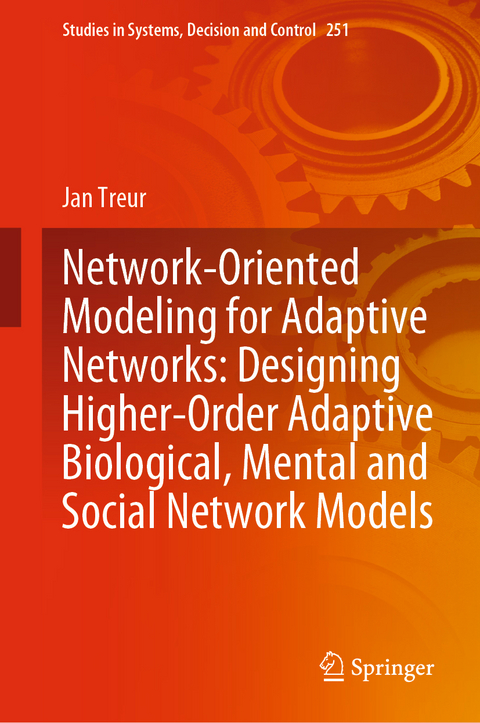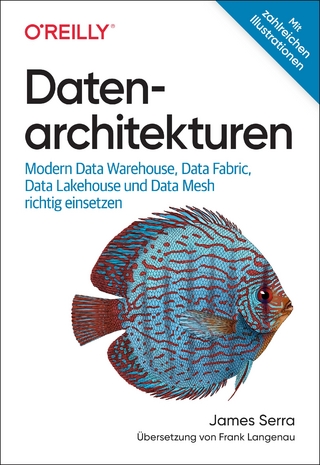
Network-Oriented Modeling for Adaptive Networks: Designing Higher-Order Adaptive Biological, Mental and Social Network Models
Springer International Publishing (Verlag)
978-3-030-31444-6 (ISBN)
This book addresses the challenging topic of modeling adaptive networks, which often manifest inherently complex behavior. Networks by themselves can usually be modeled using a neat, declarative, and conceptually transparent Network-Oriented Modeling approach. In contrast, adaptive networks are networks that change their structure; for example, connections in Mental Networks usually change due to learning, while connections in Social Networks change due to various social dynamics. For adaptive networks, separate procedural specifications are often added for the adaptation process. Accordingly, modelers have to deal with a less transparent, hybrid specification, part of which is often more at a programming level than at a modeling level.
This book presents an overall Network-Oriented Modeling approach that makes designing adaptive network models much easier, because the adaptation process, too, is modeled in a neat, declarative, and conceptually transparent Network-OrientedModeling manner, like the network itself. Thanks to this approach, no procedural, algorithmic, or programming skills are needed to design complex adaptive network models. A dedicated software environment is available to run these adaptive network models from their high-level specifications.
Moreover, because adaptive networks are described in a network format as well, the approach can simply be applied iteratively, so that higher-order adaptive networks in which network adaptation itself is adaptive (second-order adaptation), too can be modeled just as easily. For example, this can be applied to model metaplasticity in cognitive neuroscience, or second-order adaptation in biological and social contexts. The book illustrates the usefulness of this approach via numerous examples of complex (higher-order) adaptive network models for a wide variety of biological, mental, and social processes.
The book is suitable for multidisciplinary Master's and Ph.D. students withoutassuming much prior knowledge, although also some elementary mathematical analysis is involved. Given the detailed information provided, it can be used as an introduction to Network-Oriented Modeling for adaptive networks. The material is ideally suited for teaching undergraduate and graduate students with multidisciplinary backgrounds or interests. Lecturers will find additional material such as slides, assignments, and software.On Adaptive Networks and Network Reification.- Ins and Outs of Network-Oriented Modeling.- A Unified Approach to Represent Network Adaptation Principles by Network Reification.- Modeling Higher-Order Network Adaptation by Multilevel Network Reification.- A Reified Network Model for Adaptive Decision Making Based on the Disconnect-Reconnect Adaptation Principle.- Using Multilevel Network Reification to Model Second-Order Adaptive Bonding by Homophily.- Reified Adaptive Network Models of Higher-Order Modeling a Strange Loop.- A Modeling Environment for Reified Temporal-Causal Network Models.- On the Universal Combination Function and the Universal Difference Equation for Reified Temporal-Causal Network Models.- Relating Network Emerging Behaviour to Network Structure.- Analysis of a Network's Emerging Behaviour via its Structure Involving its Strongly Connected Components.- Relating a Reified Adaptive Network's Structure to its Emerging Behaviour for Bonding by Homophily.- Relatinga Reified Adaptive Network's Structure to its Emerging Behaviour for Hebbian learning.- Mathematical Details of Specific Difference and Differential Equations and Mathematical Analysis of Emerging Network Behaviour.- Using Network Reification for Adaptive Networks: Discussion
| Erscheinungsdatum | 15.11.2019 |
|---|---|
| Reihe/Serie | Studies in Systems, Decision and Control |
| Zusatzinfo | XVII, 412 p. |
| Verlagsort | Cham |
| Sprache | englisch |
| Maße | 155 x 235 mm |
| Gewicht | 811 g |
| Themenwelt | Mathematik / Informatik ► Informatik ► Datenbanken |
| Mathematik / Informatik ► Informatik ► Theorie / Studium | |
| Mathematik / Informatik ► Mathematik ► Angewandte Mathematik | |
| Naturwissenschaften ► Physik / Astronomie | |
| Technik | |
| Schlagworte | Adaptation Principles • Adaptive Mental Networks • adaptive networks • Adaptive Social Networks • Complexity • Higher Order Adaptation • network-oriented modeling • Network Reification • Plasticity and Metaplasticity of Networks • Relation between Network Structure and Emerging Ne • Relation between Network Structure and Emerging Network • Temporal-Causal Network Models |
| ISBN-10 | 3-030-31444-8 / 3030314448 |
| ISBN-13 | 978-3-030-31444-6 / 9783030314446 |
| Zustand | Neuware |
| Informationen gemäß Produktsicherheitsverordnung (GPSR) | |
| Haben Sie eine Frage zum Produkt? |
aus dem Bereich


